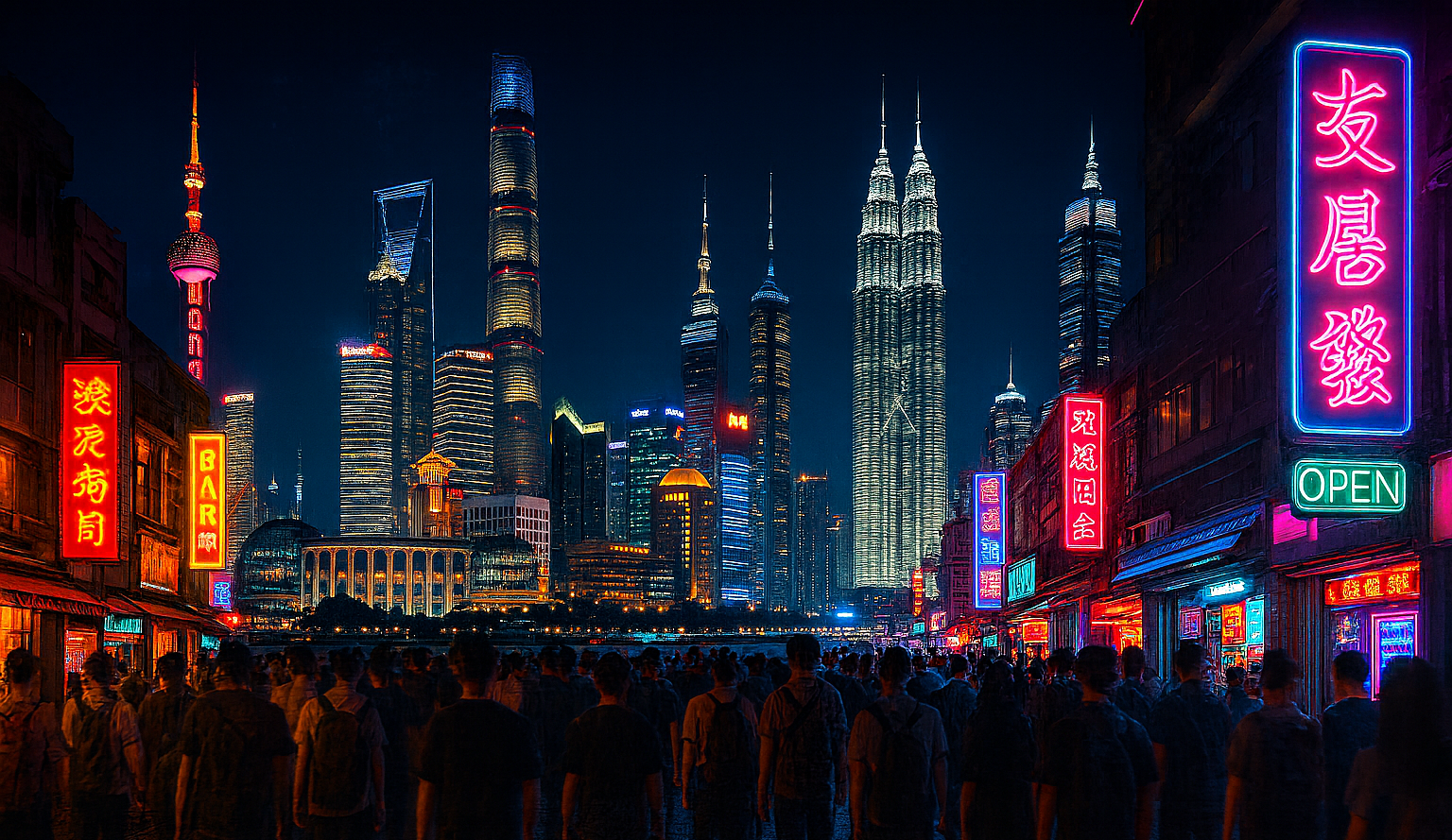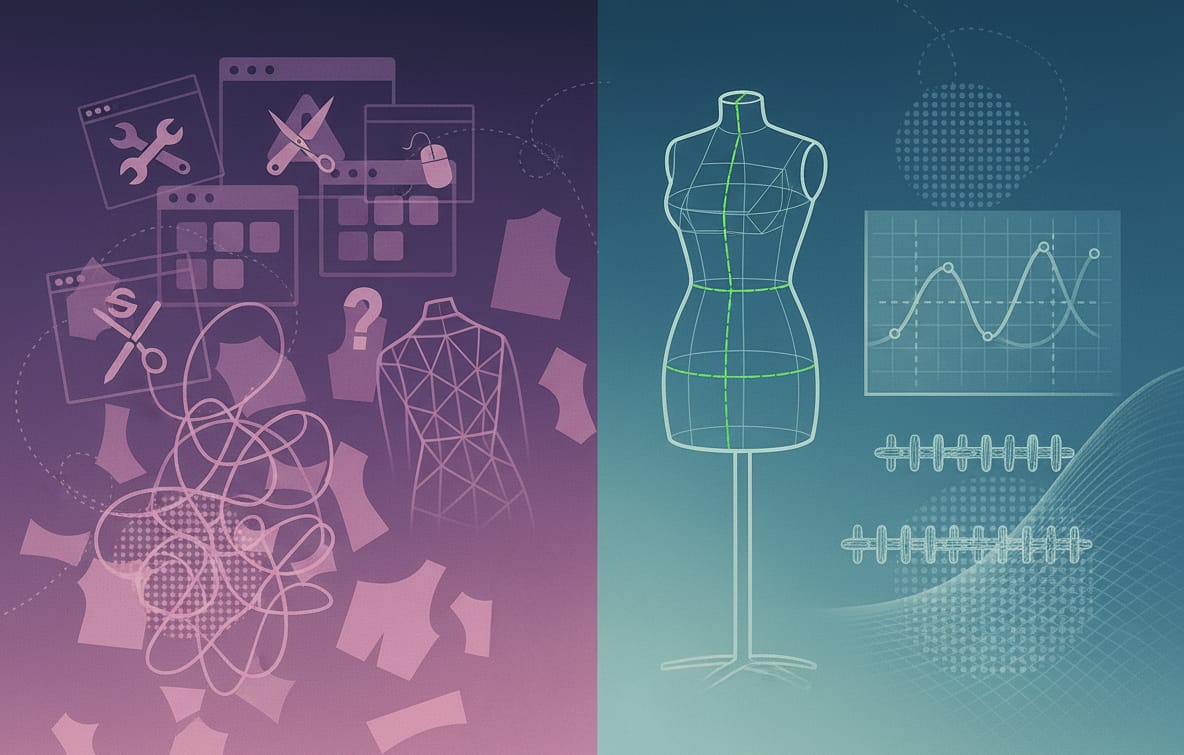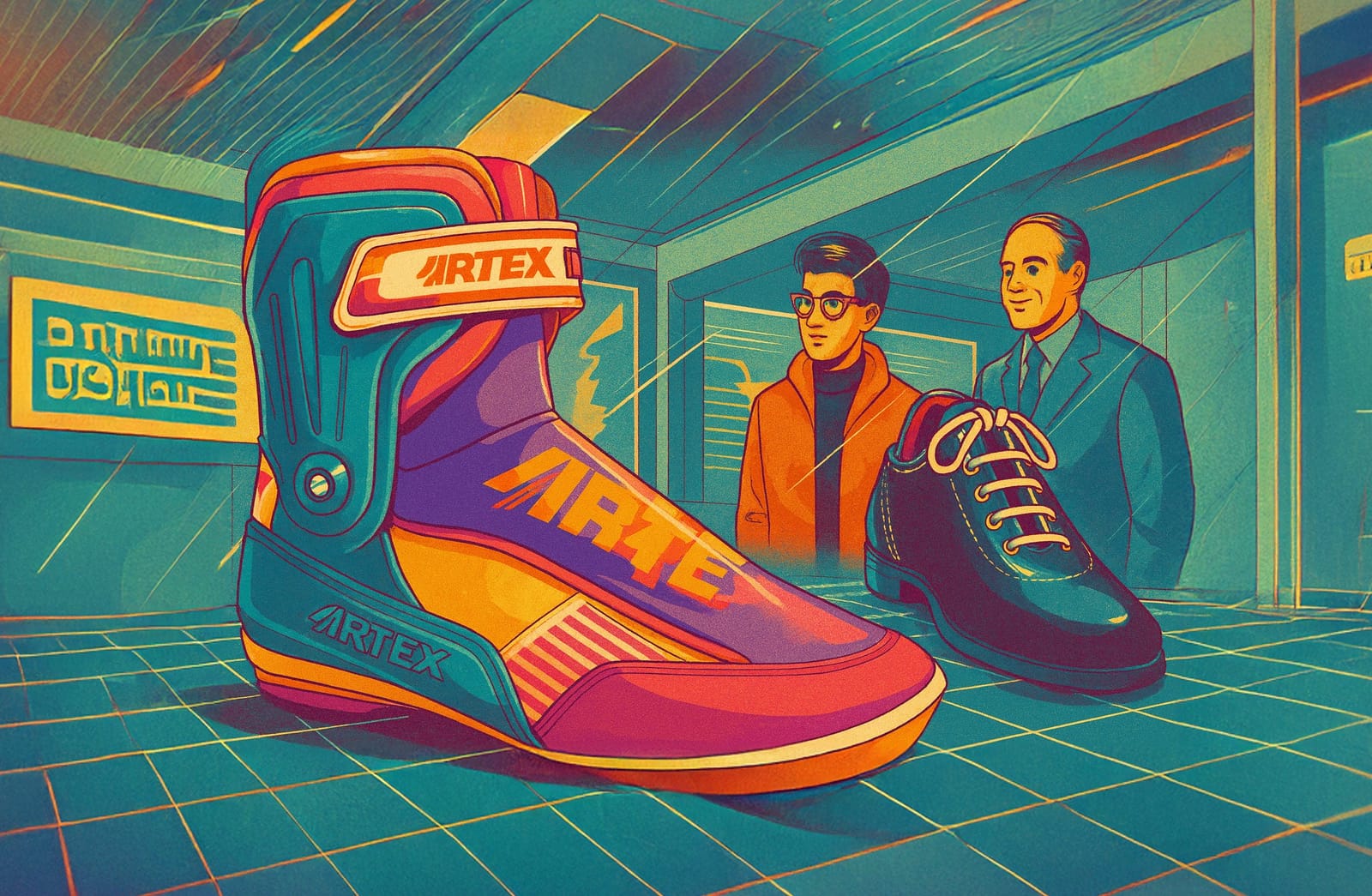Hong Kong is a city where heritage and hypermodernity sit shoulder to shoulder, where unpredictability and change feel like part of the infrastructure. Its skyline isn’t just a backdrop but a reminder that reinvention is an ordinary act here. And last week, as designers, manufacturers, technologists and sourcing leaders gathered for Design.Make.Sell 2025, that feeling intensified. Conversations didn’t circle around incremental improvements or predictable “digital transformation” tropes. Instead, they carried the charge of an industry that has to rethink not only how it works, but why.
From what we heard, the most important shifts in fashion are perhaps no longer happening in Parisian maisons or New York studios. They are happening in the factories of Vietnam, the design teams of Shanghai, the retail labs of Seoul, and the sourcing offices in Hong Kong.
Asia hasn’t just evolved from the world’s production engine; it has become the industry’s experimental core.
And the conversations in Hong Kong revealed something else: this transformation is not tidy. It is messy, uneven, contradictory, and remarkably human.
From Linear Logic to Living Systems
The traditional rhythm of fashion - design, then make, then sell - felt strangely nostalgic in these discussions. Several speakers described it as a comforting illusion, a tidy diagram that obscures the far more fluid reality of modern product creation.
When Dorothy Pun (VP - Digital Commerce, Cobalt Fashion) spoke about AI’s impact, she didn’t frame it as a tool, but as a reordering force. “AI’s true potential,” she said, “is reorganising the whole supply chain - from a linear fashion system to a dynamic, interconnected one.” She described a world where trend signals surface instantly, where concepts are tested before they physically exist, where imagery is generated at the speed of thought, and where manufacturing responds to confirmed demand rather than hopeful forecasts.
It sounded like a provocation, but it wasn’t. It was simply a description of what’s already quietly unfolding. And that unfolding isn’t driven by AI alone; it’s being enabled by the digital foundations teams already rely on. As Yeo Kim (EVP, Global Head of Design, Li & Fung) and Ann Ho (Director, Digital Asset Excellence, adidas) both made clear, 3D and digital product creation are already acting as the connective tissue between design, development and manufacturing, enabling teams to iterate, validate and communicate long before anything physical exists.
The Comfort of Certainty Is Gone
What happens when you design and validate products before making them? For brands, it means fewer samples, less waste, and decisions made with clarity rather than instinct. But for manufacturers, it means volatility.
Keith Ip (CTO - Li & Fung), described a retailer who developed a full range using nothing more than digital imagery pinned to a wall; the room leaned in. The story had the energy of a glimpse into the near future. But when Kai Yuen Kiang (CIO, Crystal International) responded, the tone shifted. He didn’t hide his discomfort: “From a manufacturing point of view, I don’t like it.” The room laughed, but his point landed: factories cannot reconfigure capacity overnight simply because consumer sentiment shifts quickly.
This tension - between agility and feasibility - was a recurring undercurrent. Everyone could feel the promise of new models, but they could also feel the strain. Pre-totyping may eliminate waste, but it also demands a level of responsiveness that no factory, however sophisticated, can simply will into existence.
And yet, no one argued for a slower future. Instead, there was a quiet acknowledgment that the industry is moving into a phase where brands and factories will need to share uncertainty, not outsource it.
Factories Are Becoming the New R&D Centres
For years the conversation about “innovation” centred on brands. But at this event, much of the boldest thinking came from the manufacturing side. And it came with urgency.
Labour availability is no longer a given. As Kai noted, “Young people simply don’t want to work in factories anymore.” Higher wages don’t fix that. Better conditions don’t fix it. The next generation simply imagines a different kind of life.
So factories are evolving, and quickly. AI-led inspections, robotic assistance, AR-based training, intelligent scheduling, digital twins that simulate energy, heat, and workflow efficiency…none of it was presented as futuristic. It was presented as survival.
Cecilia Chan (CCO, Legend Swimwear) captured this reality sharply: “Tech alone won’t decarbonize fashion.” Sustainability, in her view, is not a compliance requirement but a design problem, one that smart factories are increasingly solving through circular water systems, adaptive energy management and data-driven material use.
Several speakers pointed out that factories are now ahead on digitisation, sustainability metrics, real-time traceability, and operational automation. Factories aren’t being pushed to modernise by brands anymore; it’s brands being pulled forward by factories.
The Consumer Is No Longer Who We Thought They Were
If the manufacturing discussions were grounded, the conversations about consumers felt almost philosophical.
Yann Bozec (Former President - Asia Pacific, Tapestry), reflecting on years leading one of luxury’s biggest operations in Asia, noted that “emotional connection now outweighs price.” But what does emotional connection even mean in a world shaped by TikTok microcultures, AI-filtered discovery, and an attention span trained to move in two-second pulses?
Alexandra Shagzhina framed the dilemma with precision. Brands, she suggested, now operate with two simultaneous audiences: the human seeking authenticity, and the “agentic customer” - the AI-enhanced, algorithm-guided persona making automated recommendations and decisions long before the human thinks consciously about what they want.
This isn’t dystopian. It’s simply the lived reality of a new generation.
The challenge for brands is that they must resonate emotionally while also interoperating with algorithms. Retail isn’t a channel anymore, but an interface; a place where identity, technology, culture, and commerce collide.
Creativity, too, is shifting. As Adrian Fürstenburg (Handbag Designer) noted, characters like Labubu and Hello Kitty reveal how Asia’s cultural icons spread globally not through trend cycles, but through emotion and shared belonging. Their rise shows that Asia’s cultural influence isn’t just commercial, but human.
In retail, Asia has already moved beyond omnichannel into a world where digital, physical and social commerce are indistinguishable. The region’s consumers don’t think in channels; they simply move fluidly through whatever touchpoint offers the most meaning, convenience or connection in the moment.
Asia is where all of these behaviours are evolving the fastest.
Asia is often framed as the place where things are made. But the region is also where culture is shaped through stories, emotion, and community. When you create for belonging rather than volume, you design a different future.
- Kate Padget-Koh, Chief Supply Chain Officer, SQUATWOLF
Sourcing Isn’t Geography Anymore. It’s Capability
The sourcing leaders described a landscape defined less by cost and more by complexity. Tariffs shift. Trade policies evolve. ESG requirements tighten. Political alliances wobble. Climate risks rewrite production calendars.
Asia isn’t merely keeping pace with the reshaping of global sourcing; it’s architecting it. As production spreads across Vietnam, India, Indonesia and the wider ASEAN region, the shifts aren’t reactive; they reflect deliberate strategies to build resilience, redistribute risk, and align capability with demand. What looks like fragmentation from the outside is, on the ground, a recalibration of where and how the region wants to compete.
The world used to think supply chain innovation happened in the West. Today, most real-time problem-solving happens in Asia; at the factory level, with teams who have to manage disruption every single week.
- Ankit Gour, Global Head of Operations, DHL Order Management Solutions
Several speakers noted that Asia’s more advanced manufacturing hubs are preparing for incoming European regulations - CSRD, CSDDD, and the Digital Product Passport - faster than many European brands themselves. For factories in the region, compliance isn’t a paperwork exercise; it has become an innovation driver.
In the middle of this, companies are forced to recast sourcing not as a cost decision but as a capability map.
Alex Thomas (SVP, Product Operations - Caleres) said it best: ''brands now need sourcing portfolios built to withstand volatility, not optimise for theoretical stability.'' The question is no longer, “where can we produce cheaply?”, but rather, “where can we produce responsibly, quickly, consistently, and with confidence in both compliance and capacity?”
That recalibration gives Asia - particularly its more advanced manufacturing hubs - an unexpected advantage. The region has spent years investing in capabilities many brands are only now waking up to: traceability, digital readiness, automation, energy intelligence, multi-country redundancy, and cross-border collaboration.
The global map isn’t being redrawn, but it is being reinterpreted.
The Talent Crisis No One Wants to Admit
Perhaps the most unsurprising current beneath the event was the realisation that technology isn’t the bottleneck. People are.
Edwin Keh (Lecturer, Wharton School), who has spent decades at the intersection of academia and industry, was blunt: ''fashion is losing its talent battle to tech''. The romance of the industry cannot compete with the salaries, flexibility and cultural status of gaming, software engineering, or digital art.
The result is a widening capability gap. Teams know the tools - 3D, AI, automation - but don’t know how to operationalise them. As Frederieke Van Doorn (CEO, FREY) pointed out, ''the skills that matter most now aren’t technical. They’re cognitive: systems thinking, cross-functional empathy, the ability to translate between creative, commercial, and operational languages''.
Fashion doesn’t just need new skills. It needs new kinds of people and new ways for those people to work together.
Asia Isn't Reacting to the Future. It's Prototyping It
The closing session crystallised what had been quietly building: Asia is no longer the world’s factory but its proving ground.
Yann Bozec articulated what many have sensed: “Asia will increasingly set the creative and commercial agenda - not follow it.” And Andrew Massey (ex-Head, Technology, Luxury Maison) added a line that lingered: ''Asia must stop being treated as an execution market because it is already something else. It's a leadership market''.
The insight wasn’t triumphalist. It wasn’t even celebratory. It was simply descriptive of a shift already in motion.
Fashion’s Future Will Be Built in Ecosystems, Not Silos
What resonated most in Hong Kong wasn’t a single technology, trend or prediction. It was the collective recognition that fashion can no longer afford to operate in fragments. The next decade belongs to organisations and regions that can integrate design, manufacturing, sustainability, technology, and consumer understanding into a single, coherent, connected system.
Asia is not perfect. It is not homogenous. It is not always aligned.
But it is experimenting, and with urgency, with scale, and with a willingness to rethink fundamentals rather than polish what already exists.
Fashion’s future will be co-authored.
And right now, Asia seems to be holding the pen.






